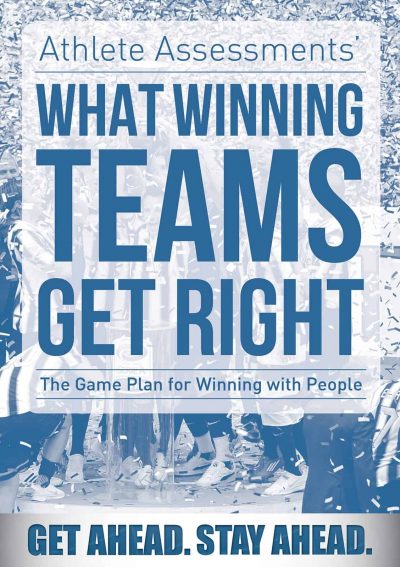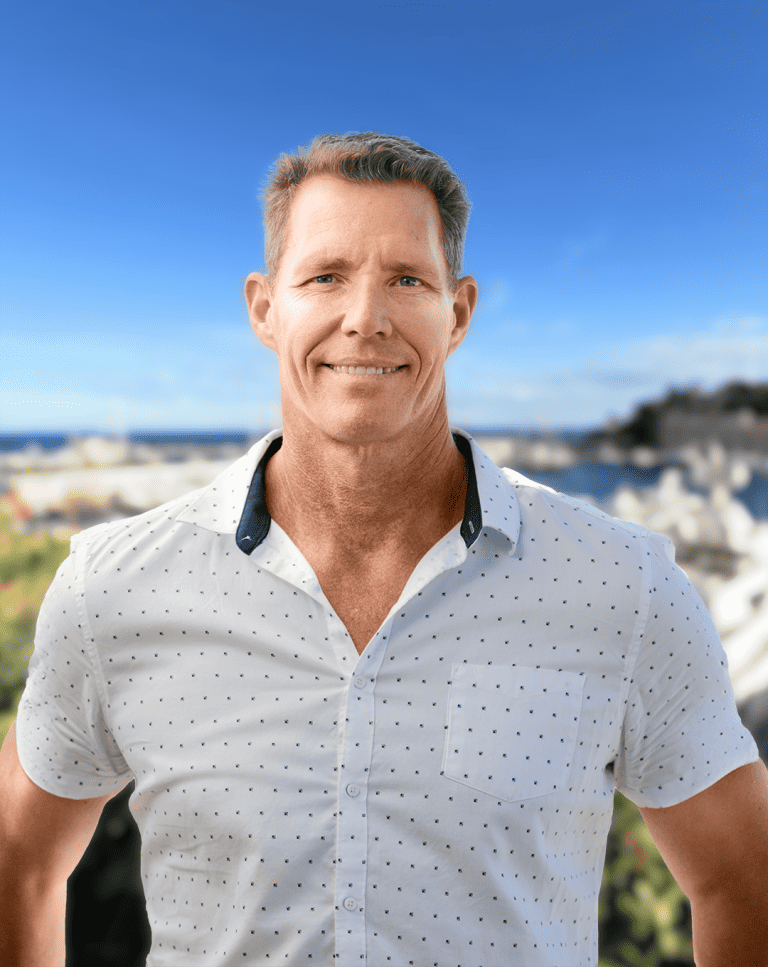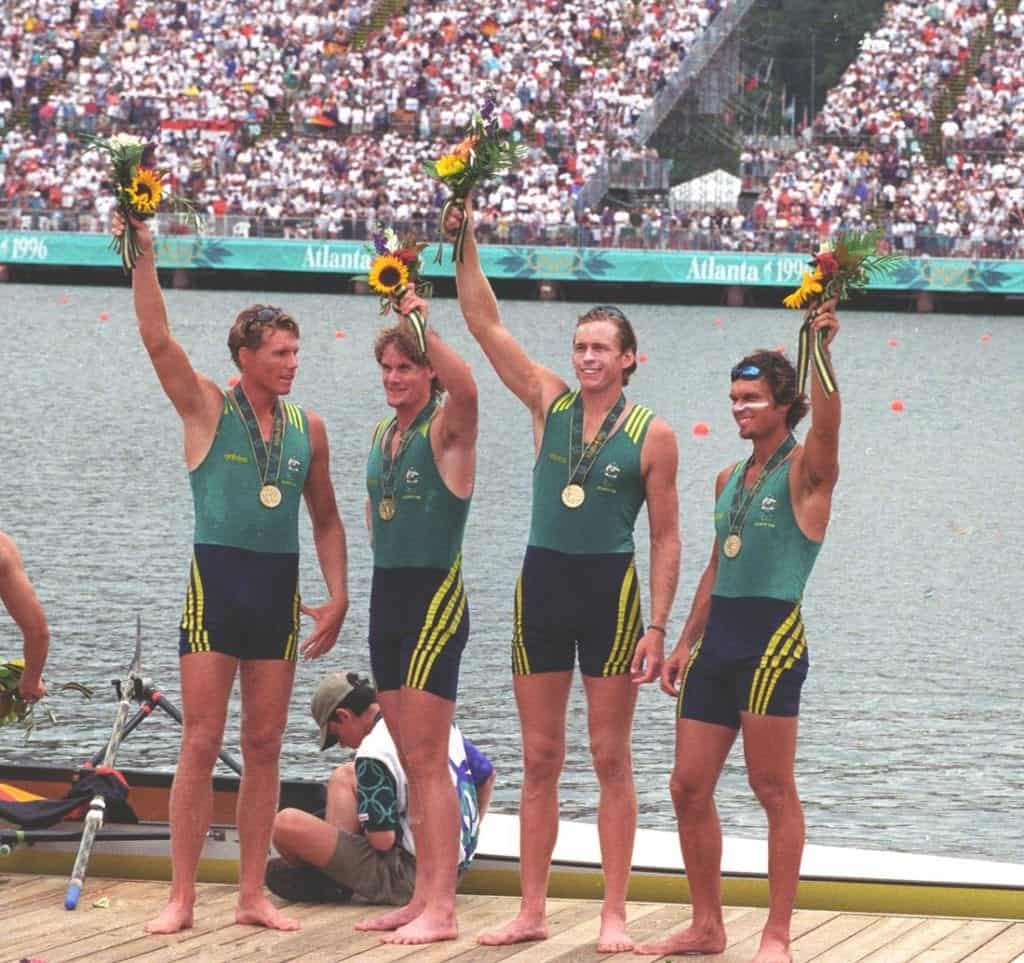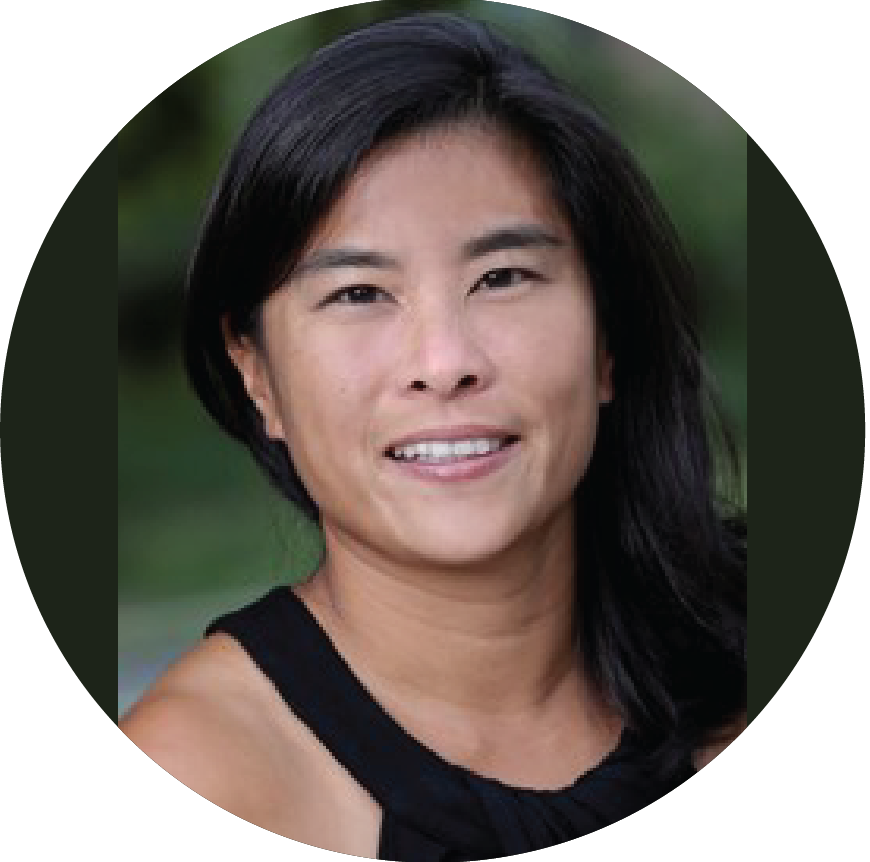 Our Extended Interview
Our Extended Interview
By Mim Haigh, Sports Writer – Athlete Assessments
When we interviewed Sandra Chu for our recent article “Game Changing” there were just too many valuable insights for only one article. To overcome this, we’re sharing the extended Q&A here.
The title of your consulting group is Two Tigers Consulting. Where did the name come from?
I spent my undergraduate years at Princeton University. Academically and athletically, I’ve been a proud Tiger ever since. In addition, my firm’s philosophy is that everyone’s path to excellence is unique and it is only in that bespoke approach that we can truly achieve all we are capable of. No two tigers have the same stripes and in that vein, my approaches for all of my clients are tailored for the individual.  Every program, every solution, every training I offer is built for the client based on his/her goals and his/her unique skills. I think the Two Tigers approach is powerful because clients immediately resonate with the customized programs I design. I like the fact that Two Tigers honors the opportunities I had at Princeton and the primary strategy of the business.
Every program, every solution, every training I offer is built for the client based on his/her goals and his/her unique skills. I think the Two Tigers approach is powerful because clients immediately resonate with the customized programs I design. I like the fact that Two Tigers honors the opportunities I had at Princeton and the primary strategy of the business.
You’ve been Head Coach of the women’s rowing program at William Smith College since 2002, in that time, you’ve led your teams to the NCAA Championships eight times and to the Liberty League Championships nine times. Your record evidences a consistent culture of success. What drives that culture?
My expectation is that everyone in our program, coaches included, tries to be better than yesterday. Underlying that philosophy are several promises I make to my athletes. First, we won’t ever coach them to be mediocre. I have always been very motivated by the pursuit of excellence and the rewards of overcoming challenges. So, the team’s bar is high and focused on process–if we’re improving, we’re doing it right. I think that naturally leads to consistent success. Second, we will always provide them with tools to improve. We won’t do it for them–but we’ll keep giving them tools (and finding new tools if the ones we offer don’t work) until they are successful. It’s their responsibility to pick them up–and that, of course, means they’re accountable for their own success. Third, we own our mistakes. After every practice, every race and every season, our staff is looking for what we could have done better as coaches. We articulate our daily mistakes to the team, apologize and work to make it right. We communicate what risks we are taking and if those risks fail, how those mistakes give us a path for improvement. This models the kind of courage required for success. And finally, we will ask them to do things that are scary and they might feel they can’t achieve. But, we promise only to ask when we know they are capable. Our athletes trust us and this helps me to direct the program with a focus on forward momentum.
You believe in the depth of human potential and the human capacity for change. What led you to develop these beliefs?
I’ve got a background in psychology and I am a behaviorist. Changing behaviors typically changes outcomes which then can change beliefs. So, probably, I am wired for change. And while I don’t think I can point to a single moment or event that led me to these beliefs I do think that my time as a coxswain, taught me to be optimistic. In that seat, you have to believe you can turn a loss into a win. Once I was coxing an A-boat in practice and thrashing our B-boat all day long. Then, my coach switched the coxes. I did not doubt for an instant that we were going to turn around and beat the A boat. And I didn’t give my B-boat rowers the opportunity to consider losing again. We won. It wasn’t pretty but I think this probably started me down this path of recognizing that change is more possible than most people think. As an optimist, I am pretty stubborn about change. I remember coaching a rower for a change that was really eluding her. She literally stopped rowing and said, “seriously, Sandra? I’m a senior. It’s two days before NCAA’s. If I haven’t made this change by now, it’s not happening.” Admittedly, she was right. And we could laugh about it–but I think that story underscores my persistence–I’ll never give up on an athlete who has the potential to make the change.
Can you comment on how satisfying it is to watch your athletes evolve.
Over the years I have come to realize that I love rowing but I also love transformation. I am lucky enough to be able to use rowing as a way to achieve that with my athletes but I also find the transformation process with clients outside of rowing very rewarding. My clients are looking for ways to optimize their performance in areas that they are really passionate about. So, when I can help them get those changes they want–and the changes are fundamental, long-lasting changes–that is very fulfilling.
How do you facilitate communication within your teams?
Not only do I have a degree in psychology but I also hold a degree in English and Writing. So, I am a huge believer in the power of words. A student of mine once emphasized that words become thoughts become actions. On our team, I ask my athletes to be responsible for their words and to understand how powerful they are. And then I require that they back up their words with actions that mean the same thing. We do this in a variety of ways. First, we use DISC Behavioral Analysis with our team to help each athlete understand her communication preferences including content, level of detail, frequency, and rate. Even details like volume or number of people involved in the communication stream are extremely important for successful dialogue. We share everyone’s profiles so teammates can receive each other well and also mold and shape their communication so it is well received. This eliminates a lot of the drama that comes from teammates assigning motivations to words or actions when there aren’t any. Then, we also mandate that athletes understand and explore their role in dialogue. Using principles developed by Susan Scott, William Smith Alumna and author of Fierce Conversations, we have a meeting request form and a worksheet that athletes use to prepare themselves for a conversation with the coaches or sometimes teammates. This also helps coaches meet the athlete where she is emotionally and mentally. I also have a 24-hour policy–if something a coach or teammate has said or done bothers you for more than 24 hours, then you need to initiate a conversation. Sometimes team members will ask a team leader, our sport psychology consultant or another teammate to help them. But in all cases, they start by filling out our meeting request form. Finally, we’re always looking to optimize performance. We schedule conversations, hard dialogues and conflict to fit in with our performance demands. I can’t tell you the number of times we’ve “scheduled” a storm between teammates or boat mates so that we could recover before an important race. It always scares the athletes but once we move through it, they are so much more grounded and ready to go.
You mention generational types – Millennials, Z-Generation, how does generation or age influence communication style?
It’s no secret that the digital age and social media are changing how and when people communicate. Our Z-Gens were born into a world of devices and our Millennials lead the charge on technology application. Don’t get me wrong–I love technology and use it. But I also know that it is limiting the communication skill set that these generations are developing. In athletics, group dynamics and team performance, in-person interactions still determine success. But texting, e-mail, and social media platforms such as Instagram and Snapchat aren’t dialogue. The sender or post-er never sees the emotional wake of what they’ve “said” and the recipient doesn’t get to organically work through the emotions created by the sender. That’s definitely a vulnerability for teams. We’re losing the ability to be empathetic and to value diverse perspectives. And we’re forgetting those behaviors that signal respect like appropriate response time, please and thank you. At the same time, if you are a Millennial or a Gen-Z and your coach or manager is not, there can be an immediate disconnect in how information is delivered, even before we get to its content. I think there’s give on both sides. I expect my athletes to be a little less Millennial and I expect myself to be a bit more. The common ground we find enables us to have honest dialogue assisted by technology–not hijacked by it.
You’re an advocate of technology and empowering athletes with information about their performance in training and competition. How do you prepare your athletes to accept what is often confronting feedback about their performance?
I think feedback is only confrontational if it is presented that way. We use technology as a tool to point out that the athlete has left speed on the table. It’s more of a nudge that says, “hey, I know you want to be faster, can you let me show you something that helps you do that?” Last season we started to use the FirstBeat Heart Rate monitoring system. Once the athletes figured out that their best scores both on and off the water were coming from 93-96% of maximum heart rate and we could give that info in real time, they learned how to be more courageous and to re-frame their physical distress. As soon as they figured out what speed felt like–what kind of effort it took to make it–they started crushing their personal records. We could also start to unravel the complexities of perceived effort and actual physical effort and help athletes prepare for, avoid and conquer the physical, emotional and mental barriers that made an average physical effort seem like an excessive one. Once we could do that, athletes could start to really interrogate their off the water preparation and behaviors as well as explore more fully the upper limit of their capacities. With our coxswains, we match 100 meter splits with their actual race transcript. Based on the DISC profile of the individuals in the boat, we can make content, tone and race strategy changes that give us better splits at key times. So instead of getting caught up in telling the boat it went slower or berating a coxswain for not rallying her team, we can give her a tool that gets a better result.
How important are team dynamics in success?
I think there’s a lot of evidence for teams to have performance success with less than optimal team dynamics. But I think that the teams with the most success (and the most enduring success) and the most satisfaction always have healthy dynamics. This doesn’t mean that everyone on the team is best friends–but it does mean that everyone on the team understands each other and respects each other’s commitment to the process of competition. I also think that when individuals have this high level of respect for each other, they demonstrate a high level of respect for themselves which is the true key to personal excellence, the foundation of personal integrity. That integrity will drive an individual to personal excellence in all realms, not just her sport or job.
What gets you excited/what do you look forward most about your role as a consultant and/or coach?
Well, it’s no secret that I love to go fast. I love watching crews rowing well and winning is always a good time. But, at the end of the day, I am always most passionate about helping my athletes and clients achieve a goal that they thought might have been impossible. I love watching people reject mediocrity and take on excellence, and I love being part of teams and organizations that are committed to kindness and respect. For me, personally, I love being challenged by my situation. I am a natural problem-solver so there’s no challenge I won’t take on. Tell me something is impossible and I’ll prove you wrong. When I can help a team or individual achieve success because I have had to be particularly creative, strategic or had to learn a new skill–that makes my day.
What has been the top 3 things that have helped you succeed in your work with clients?
My work with clients, and what Two Tigers specializes in, rests on my ability to deeply understand the goal. We often start our consultation not by asking “what do you want to achieve,” but by asking “what is your biggest roadblock?” Once we know where clients are getting stuck, then I use engaged and engaging teaching, applicable skills, and meaningful practice of those skills to affect change. A lot of times, deep listening coupled with insightful and positive inquiry are my best tools. What is the problem really? What does the client want really? If I can figure that out, then I can build strategies that eliminate those problems.
What feedback do you receive from your clients about the best thing about working with you?
The most consistent feedback I get is that my presentations to groups are incredibly engaging and useful for my audience and that my one-on-one work is deeply personal and enduring. My clients make long-lasting changes that continue to develop over time and they see how those changes impact their performances almost immediately.
Is there an example of your work with a client or clients that stands out for you? That highlights the great work that you do?
On one consultation, I worked with a large group of junior coaches. I was warned by the person who brought me into the organization that there were a number who absolutely did not want to be in the room and considered my content to be a waste of time. I didn’t have a lot of time with the group compared to other consults I had done and I only had one shot at it. When I reached the end of my presentation and opened the floor for questions, almost every hand was in the air with an excited, engaged question and the nay-sayers in the group were completely won over. A full year after my visit, the coaches were still referencing my work and utilizing it.
On a one-on-one level, I worked with a professional who was undergoing a career shift. Using her DISC Analysis, we were able to identify environments that would be far more rewarding for her to be in. She not only moved into a new industry but was able to use our work together to market her skills and her personality more effectively during her hiring process. I have continued to advise her and her profile helps me to provide negotiation strategies that feel true to her and are effective.
Mentoring young coaches and professionals is also a strength of mine and Two Tigers. I’ve helped people navigate office politics and difficult supervisors in order to improve their work environments or gain responsibilities that have helped them develop professionally.
What is most miss-understood about the work you do with athletes, coaches and/or administrators?
People consistently refer to the DISC Behavioral Analysis as a personality profile. This limits their understanding of its robustness. Many people think I have some gimmick or trick that ultimately doesn’t work. It’s very difficult to convince people that I’m teaching them something that is a malleable tool for life. Those who do, however, are awed by its power and how applicable it is to almost every area that impacts performance. It’s a game changer.
If you were to give one piece of advice to a coach or athlete, what would it be?
Only one? I feel like I learn a million things every year that I wish someone had told me: Ask for help but always learn how to do it yourself. Invest in people not just their performance. Try new tricks. Make lots of mistakes and own them all. Always take the opportunity to build a relationship (aka use the phone or talk in person instead of e-mailing or texting). Treat everyone fairly (which doesn’t always mean treat everyone the same). Learn stuff, every day. Do things you are bad at…in front of other people.
What do you see as the number 1 issue your clients face and work to overcome?
My job as a coach is to get everyone to the same place, at the same time. But, I don’t necessarily need everyone to do it on the same road. My clients are often trying to fit into a model of leadership that they’ve been taught is the “best” instead of accepting their own wiring and then working to adapt their wiring to be received well by others. The struggle to be someone you aren’t, or to force someone to accept someone they can’t is so much harder than just adapting your communication style. Teaching my clients how to alter their behaviors without compromising their integrity is paramount to their success.
What you are most proud of? What has been your career highlight so far?
This is a tough question. It seems like every year there’s been something I’ve worked hard at and achieved that makes me proud–even if it is something as small as watching a student who struggled their first year graduate with flying colors. I think if I had to pick, however, I would land on two very different moments.
The first is NCAA Championships 2012. This was the first time my Varsity eight made the podium, closing a gap to the second place finisher by about 2.6 seconds from two weeks prior to finish just 0.8 out of second. We caught the eye of race announcer Dave Vogel who made a point of walking almost 2000 meters to shake our hands. And we put our team on the podium as a team. After we loaded up the trailer and got ready to board the bus, the team started jumping in the lake. It was close to 100 degrees out. I looked at my assistant and we nodded and we both sprinted down the dock and jumped in, too–behaviors that were very surprising to the team. Splashing in the lake with this group of incredible women is something I will always treasure.
The second moment might be considered by some to be the complete antithesis. Again, NCAA Championships. This time, only two years later. An at-large selection (just a Varsity Eight), we were in reps, a dog-fight to qualify for grands. At the 1000, we were in fourth place with top 2 to qualify. In twenty strokes we moved into first. I was quietly celebrating because that wasn’t even our fastest move–our sprint was twice as fast. The team’s spectators were going nuts on the shore. The announcer was going nuts. Heck, the parents on other teams were going nuts–everyone had a tremendous amount of respect for what the boat was doing. And then, the stroke caught an over-the-head crab. She knocked herself off her slide, and got hit in the head. We didn’t know it then, but she also gave herself a concussion. In the spectator tent, everything got dead quiet as we watched the carnage on the jumbotron. We rallied from a dead stop but couldn’t qualify. The boat, 6 seniors and three underclass women, came back to the trailer. I struggled to say anything and started the usual task of re-focusing the boat on proving its mettle in petites. One of my seniors interrupted me and asked if she could say something. She turned to the stroke, a first-year who had made the boat just days before, and said, “Thank you. Thank you for helping us get this far. Without you, we wouldn’t be doing anything we’re doing right now. Don’t be sad. You didn’t let us down.”
When we left the trailer, all of my seniors walked past their own parents and went directly to the stroke’s parents and hugged them. “Your daughter is amazing,” they said. “She’s so great. We’re so lucky to have her on the team.” The next day, I speed-rigged the boat to the opposite side, threw in a bucket, prepared my spare and we rowed the petites. All the way down the course, one of my seniors grunted “more, more, more” as they put a horizon between themselves and their competition. Those moments–all of them–showed me how much integrity my team had as athletes and people and what it meant to be a Heron Rower.
What was one thing you changed from last year that has made a significant difference?
Mid-season last year we had to throw everything out. We just weren’t racing at the same speed or ability that we showed in practice. So, every race was this dismal experience where the coaches stood on the shore in disbelief and the athletes made remarks about their race that were, honestly, just self-conciliatory and had no truth. We had to figure out how to get away from the fear of losing to embracing the wonder of “what if?” We flipped the question from “what happens if I don’t” to “what happens if I do?” So, we scrapped everything. We completely changed our coaching language, how we evaluated performance, what success was. We relied more heavily on physiological feedback, and designed practices around learning how to fail. And little by little, we learned how to race. By the end of the season, we were beating teams we had lost to. We improved our times in all boat classes over 2K by 15 seconds over the previous season. And while we still have 7-8 more seconds to find this year, if you watch our race video from our first race of the season and the last race of the season, you simply would not believe that those are the exact same athletes.
What advice would you give someone starting out in their career as a consultant and/or coach?
I would advise them to ask lots of questions and build a network of trusted advisers and references. Utilize your relationships to make yourself better and to open doors for you.
How/why did you get into what you are doing now?
As I started sharing and presenting at various Rowing Conferences, I realized that not only was I passionate and excited about the opportunities to work with a broader audience but that these opportunities pushed me to be better in coaching. DISC Behavioral Analysis, which I was introduced to by another Athlete Assessments Consultant, Tiff Jones of X-Factor Consulting, was pivotal for my program. It made sense to me that I could not only use it more fully with my team but that I wanted to increase my proficiency with the profiles. Athlete Assessments gave me excellent training and I love the added dimension that Leadership Consulting has given my career.
Can you share an ‘ah-ha’ moment in your career?
About a decade ago, I started learning about and using DISC Behavioral Analysis with my team. At the time we had a variety of standards that athletes needed to pass in order to be boated for practices and races. Because I was not a very good coach, I had set those standards for the team’s average potential. So, my fastest kids had an easy pass and my slowest kids were never going to pass. I was literally making us worse than mediocre. So, about two weeks after the latest testing fail, I changed the criteria. Instead of each individual athlete hitting the standard, the team’s average scores had to hit the standard. If the average scores hit the standards, then the whole team rowed. But if the average scores were slower than the standard, only the athletes who couldn’t hit the standard would be kept on land.
We tested. No one had any right to improve from the test two weeks earlier. Physiologically, it wasn’t possible. In fact, I was pretty scared that I had just set the entire team up for failure. But, I trusted the profiles. Every student pulled a personal best for a 5K erg, with students improving their scores from the week before an average of 50-55 seconds. Every student ran a personal best for 4.1 miles, with students improving their times by an average of 4 minutes. This was an insane result and proved to me that I had the ability to change the goals to suit the motivations of all the profiles. My fast, goal--orientated students pulled and ran to their potential because they knew that they could provide a cushion for the slowest students. My slow, people--orientated students pulled and ran to their potential because they didn’t want to let anyone down.
Since that day, I have adapted this approach for every coaching moment. It has paid off and has been the source of my belief that I have to direct the team so we all get to the same place at the same time but not necessarily on the same path.
What are you aiming for in the future?
As a coach, I’m always trying to move the program forward whether that means in results, or quality of student-athlete experience. I am always a bit restless and looking for the next step in our development. Of course, on the periphery of process, it’s all focused on winning a National Championship but there’s no point in losing sight of the steps that make that happen. If it happens, it will be because we got the process right.
In my consulting, I continue to work to develop my client base and work with sports and programs outside of rowing.
Has working with Athlete Assessments contributed to your work with clients?
The training and materials I received from Athlete Assessments have been incredibly valuable. Not only am I confident in my abilities to work with the profiles but I also know that I can get assistance immediately when I need it. They are also developing new products and programs each year that help me to continue to grow as a coach and a consultant.
How has using Athlete Assessments’ DISC Profiles helped most with your work?
Athlete Assessments’ DISC Profiles not only gives me an accurate picture of my clients and athletes’ behaviors but also provides us all with a common language. We can quickly and effectively move beyond drama and conflict by having a root understanding of each other. It makes me an more effective and efficient leader but also gives clients and athletes a much higher level of self-awareness so they can develop professionally, athletically and personally at a very fast rate.
You are welcome to read our article about
Sandra Chu, ‘Game Changing Consultant’.
Where to from here…
If you’ve enjoyed this Q&A article, you might also value reading:
- Olympic Mental Challenges – Insights from Dr Nicole Detling
- It’s not about Deficits, it’s about being your Best
- Creating Life Changing Moments: Consultant Case Study
- Conflict Management, Team Culture and High-Performance Sport
- Behind the Scenes of Villanova’s 2016 National Championship Success
- Results | Evidence | Impact – Mental Performance Consultant in Action
Are you a consultant or sport psychologist looking to achieve similar results with your clients? You too can take your consultancy to the next level and achieve the success that Sandra Chu has.
As a top consultant, your clients rely on you being the best in your field, knowing the true determinants of success and having access to the tools that will make the most impact when it comes to improving performance. Athlete Assessments’ DISC Profiling is the tool you need to help your clients realize their potential.
Find out more about Athlete Assessments’ Consultant Program now.
At Athlete Assessments we’re here to provide you with excellence in service and to help you be your best. If there is anything we can do to be of service, don’t hesitate to contact us.


